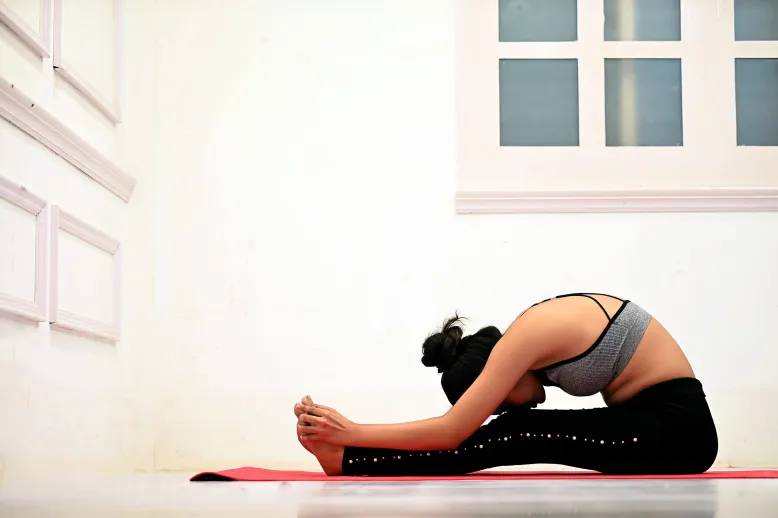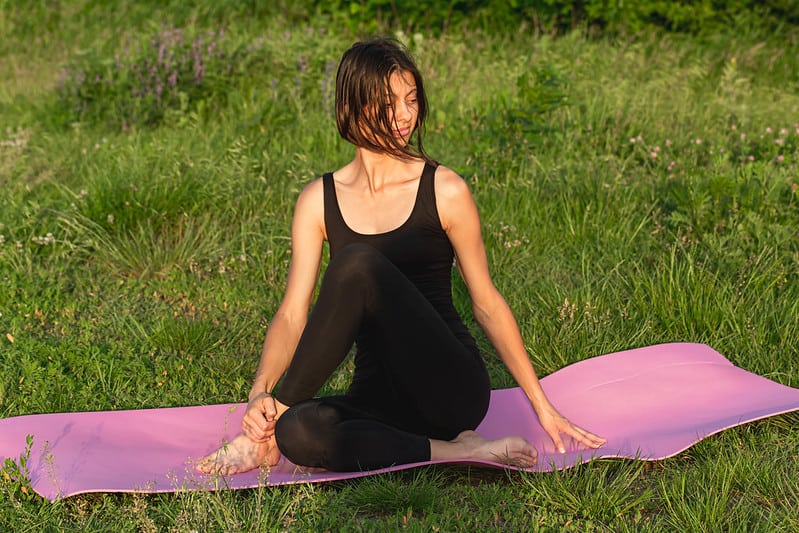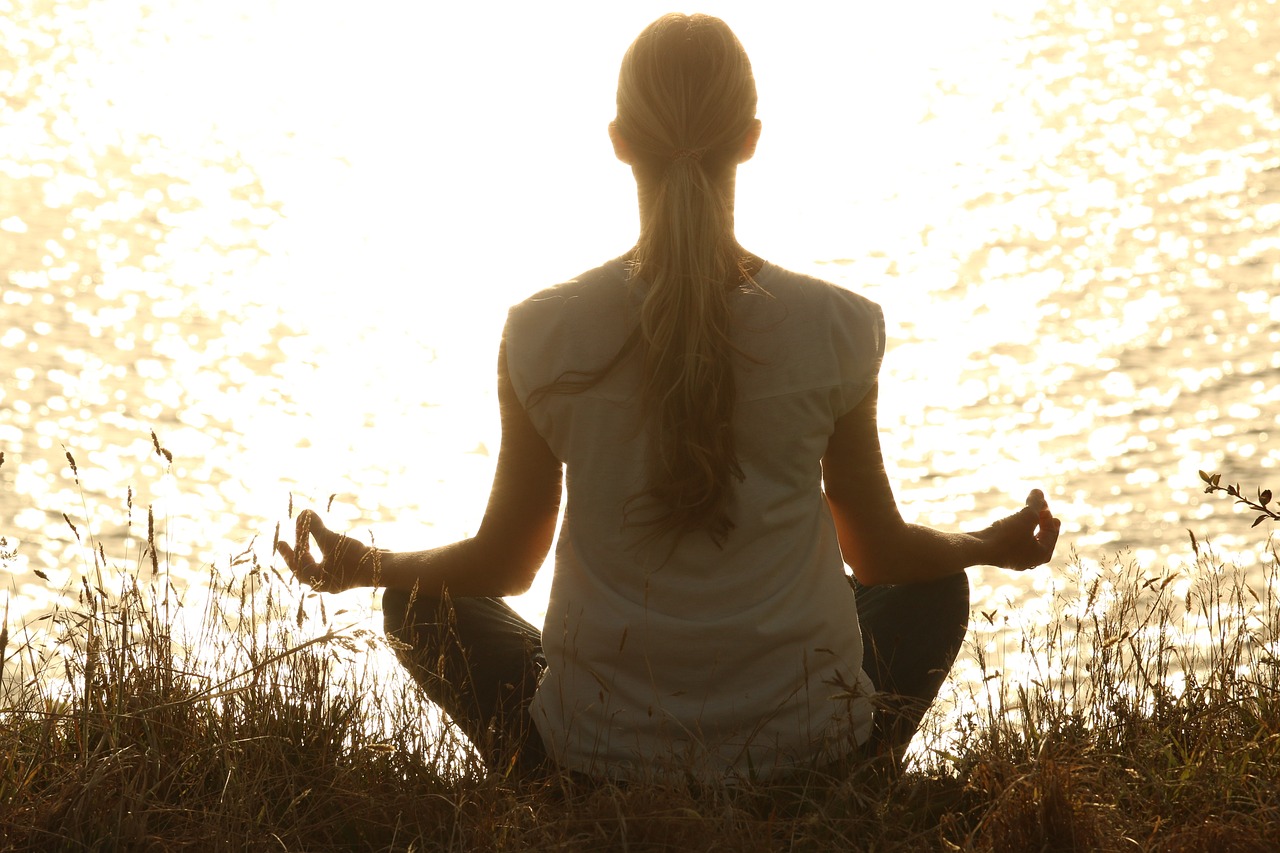In today’s fast-paced world, finding moments of peace and quiet is critical to our mental and physical health. Sukhasana, also known as Easy Pose, provides a peaceful haven among the bustle of everyday life.
Sukhasana, an ancient yoga practice, goes beyond physical position to explore awareness and inner serenity. In this in-depth investigation, we will look at the origins, practices, advantages, and variants of Sukhasana, as well as its significant relevance in today’s world.
Table of Contents
ToggleOrigin and Meaning:
Sukhasana is profoundly rooted in the rich tapestry of yoga philosophy and history. The phrase “Sukhasana” stems from Sanskrit, where “Sukha” translates to “ease” or “comfort,” while “Asana” refers to “posture” or “seat.” Sukhasana symbolizes the essence of attaining comfort and ease within oneself, both physically and spiritually.
Sukhasana has been a basic pose in yoga and meditation for thousands of years. It appears in ancient yogic works such as Patanjali’s Yoga Sutras and the Hatha Yoga Pradipika. Renowned yogis and sages have praised its benefits as a path to inner calm and self-awareness.
Benefits of Sukhasana:
Sukhasana has several physical, mental, and emotional advantages, making it an excellent complement to any health program. Here are some of the main advantages:
- Sukhasana enhances spinal alignment and develops the muscles of the back and core, resulting in better posture over time.
- Increases Flexibility: Regular Sukhasana practice gently stretches the hips, knees, and ankles, increasing their flexibility.
- Calms the Mind: By concentrating on the breath and fostering mindfulness, Sukhasana promotes inner quiet and mental clarity, lowering tension and anxiety.
- Improves Concentration: Sukhasana’s stillness and stability promote concentration and attention, making it a perfect pose for meditation and contemplation.
- Sukhasana stimulates digestion by gently compressing the belly, which relieves pain caused by indigestion or bloating.
- Cultivates Gratitude: Sitting in Sukhasana promotes gratitude and contentment, resulting in a stronger connection with oneself and the present moment.
How to Do Sukhasana
Sukhasana is a simple practice that demands conscious attention to alignment and breath. This is a step-by-step tutorial to learning the practice of Sukhasana.
- Start by sitting on the floor or on a hard cushion with your legs outstretched.
- Cross your shins in front of you, then place each foot under the opposing knee.
- Align your knees and hips so that your weight is properly distributed over both sitting bones.
- Rest your hands on your knees or in your lap, palms facing upwards or downwards, as you want.
- Lengthen your spine upward, extending the crown of your head toward the ceiling.
- Relax your shoulders away from your ears and softly shut your eyes.
- Maintain a pleasant grin while you relax your face muscles and jaw.
Deep, diaphragmatic breathing, with each inhale expanding your belly and each exhale releasing tension.
Sukhasana requires a careful combination of firmness and ease.
If sitting on the floor causes discomfort, raise your hips by sitting on a folded blanket or pillow. Furthermore, you may experiment with alternative leg placements or props to tailor the posture to your body’s demands.
Variations and Modifications:
While Sukhasana is generally performed with crossed legs, there are various variants and adaptations to accommodate individual requirements and preferences. Some typical variants are:
- Half Sukhasana (Ardha Sukhasana): In this version, one leg is folded in front of the body while the other leg is extended, making it a softer choice for individuals with tight hips or knees.
- Supported Sukhasana: Adding props like blocks or bolsters may give more support and comfort, especially for those who have restricted flexibility or movement.
- Wide-Legged Sukhasana: Instead of crossing the legs squarely in front, spread them farther apart while keeping the same alignment and posture principles. This version is useful for those who have tight hips or experience difficulty in conventional Sukhasana.
- Chair Sukhasana: For those who have difficulties sitting on the floor, practicing Sukhasana on a chair with their feet flat on the ground may provide a comparable sense of grounding and relaxation.
It is important to explore these variants carefully and listen to your body’s messages to identify which version best meets your requirements at any particular moment.
Incorporating Sukhasana into Your Routine
Including Sukhasana in your daily routine may dramatically improve your general health and quality of life. Here are some useful recommendations for implementing this holy position into your lifestyle:
- Begin with brief Sukhasana sessions, gradually increasing the time as you get more comfortable and acquainted with the pose.
- Create a sacred space. Create a calm, clutter-free environment in your house where you may practice Sukhasana without interruptions, using materials that convey a feeling of peace and tranquility.
- Establish a routine: Set aside time each day for Sukhasana practice, whether it’s in the morning to start your day on a positive note or in the evening to relax and unwind.
- Combine With Other Practices: Sukhasana may be used with other practices like pranayama (breathwork), meditation, or mild stretching to form a comprehensive self-care routine.
- Be Patient and Gentle: Approach your Sukhasana practice with patience, compassion, and an open heart, knowing that each day will provide new obstacles and insights.
Final Thought
Sukhasana is a timeless reminder of the tremendous knowledge found in simplicity and silence. Sukhasana invites us to stop, breathe, and reconnect with the essence of our being in a society that frequently values activity and outward accomplishments. As we embrace the art of Easy Pose, may we find comfort in its soft embrace, waking to the limitless serenity that lives within.
Through consistent practice and devotion for this holy pose, we may handle life’s problems with grace and resilience, embodying the real spirit of Sukhasana: ease, comfort, and deep tranquility.
So, let us return to the simplicity of Sukhasana, where the whispers of our soul find echo in the slow rhythm of our breath, and the stillness of our being becomes a refuge among the cacophony of the world.





No Comments